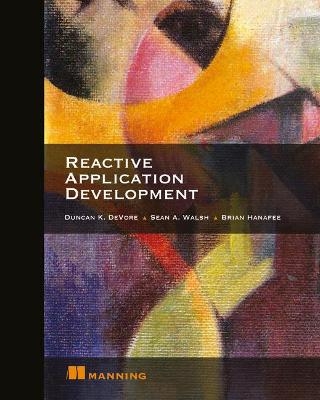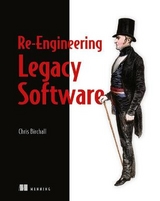
Re-Engineering Legacy Software
Seiten
2015
Manning (Verlag)
978-1-61729-246-0 (ISBN)
Manning (Verlag)
978-1-61729-246-0 (ISBN)
Zu diesem Artikel existiert eine Nachauflage
Chances are pretty good that you didn't write the application you're currently working on. Most developers inherit projects built on an existing codebase that reflects design patterns, usage assumptions, infrastructure, and tooling from another time and another team. (And the docs are complete rubbish.) Fortunately, there are techniques you can use to breathe new life into these legacy projects so you can maintain, improve, and scale them without constantly fighting their current limitations. By injecting new architectural patterns, modern techniques for performance analysis, updated test and build tools, and a healthy dose of cultural wisdom into your legacy projects, you'll develop stronger applications and create a better work experience for you and your team.
Re-Engineering Legacy Software is an experience-driven guide to revitalizing inherited projects, covering refactoring, quality metrics, toolchain and workflow, continuous integration, infrastructure automation, and organizational culture. On the purely technical side, you'll learn techniques for introducing dependency injection for code modularity, quantitatively measuring quality, and automating infrastructure. On the strategic side, you'll develop practical processes for deciding whether to rewrite or refactor, team organization, and even convincing management that quality matters. Core topics include deciphering and modularizing awkward code structures, effectively integrating and automating tests, replacing an outdated build system, and infrastructure automation using tools like Vagrant and Ansible.
Re-Engineering Legacy Software is an experience-driven guide to revitalizing inherited projects, covering refactoring, quality metrics, toolchain and workflow, continuous integration, infrastructure automation, and organizational culture. On the purely technical side, you'll learn techniques for introducing dependency injection for code modularity, quantitatively measuring quality, and automating infrastructure. On the strategic side, you'll develop practical processes for deciding whether to rewrite or refactor, team organization, and even convincing management that quality matters. Core topics include deciphering and modularizing awkward code structures, effectively integrating and automating tests, replacing an outdated build system, and infrastructure automation using tools like Vagrant and Ansible.
Duncan DeVore works at Typesafe, is a committer on the original eventsourced project that became Akka Persistence, and maintains the AkkaPersistence Mongo Plugin. Sean Walsh is CEO of reactibility.com and a seasoned architect with deep expertise in the Typesafe stack. He consults and evangelizes about reactive architectures. Together, Duncan and Sean deployed one of the first large scale Reactive applications to production.Brian Hanafee is a Principal Systems Architect at a large financial institution, with experience building reliable and secure web-based applications and backing services for millions of customers.
| Erscheint lt. Verlag | 11.9.2018 |
|---|---|
| Verlagsort | New York |
| Sprache | englisch |
| Gewicht | 515 g |
| Einbandart | kartoniert |
| Themenwelt | Informatik ► Office Programme ► Outlook |
| Mathematik / Informatik ► Informatik ► Programmiersprachen / -werkzeuge | |
| Informatik ► Software Entwicklung ► Software Architektur | |
| Mathematik / Informatik ► Informatik ► Theorie / Studium | |
| Mathematik / Informatik ► Informatik ► Web / Internet | |
| Schlagworte | Softwareentwicklungsprozess |
| ISBN-10 | 1-61729-246-X / 161729246X |
| ISBN-13 | 978-1-61729-246-0 / 9781617292460 |
| Zustand | Neuware |
| Haben Sie eine Frage zum Produkt? |
Mehr entdecken
aus dem Bereich
aus dem Bereich
Buch | Hardcover (2012)
Westermann Schulbuchverlag
34,95 €
Schulbuch Klassen 7/8 (G9)
Buch | Hardcover (2015)
Klett (Verlag)
30,50 €
Buch | Softcover (2004)
Cornelsen Verlag
25,25 €




